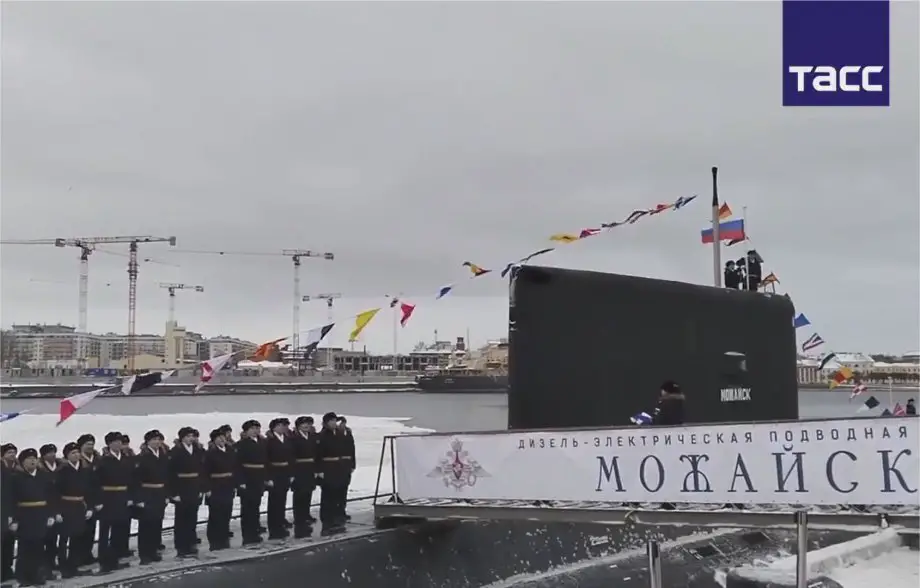Breaking news
Russia Navy receives Project 636.3 Varshavyanka class submarine Mozhaysk.
According to information published by Tass on November 28, 2023, the Russian Navy has recently received the new diesel-electric submarine Mozhaysk, part of the Varshavyanka-class (Project 636.3), which was handed over during a formal ceremony in Saint Petersburg.
Follow Navy Recognition on Google News at this link
 Russian Project 636.3 submarine Mozhaysk. (Picture source: Tass)
Russian Project 636.3 submarine Mozhaysk. (Picture source: Tass)
Originally designed as an export version of the Project 877EKM "Paltus" class, these multi-purpose diesel-electric submarines have been equipped by various nations, including China (Projects 636 and 636M), Algeria, Vietnam (Project 636.1), and Russia (Project 636.3).
The class was named for its intended export to Warsaw Pact nations and is designed for various roles such as anti-submarine and anti-surface warfare, naval base protection, coastal defense, and securing sea lanes. The design features a double hull divided into six compartments.
These submarines have an underwater range of 400 miles at three knots and a snorkeling range of 7,500 miles at seven knots, with an operational autonomy of up to 45 days. Project 636.1 includes an advanced inertial navigation system for extended operations without correction, enhancing stealth during missile deployment.
The Project 636.3 variants have improvements over earlier models in several aspects, including enhanced diesel generators, increased underwater speed, and extended snorkeling range.
They also have reduced noise levels, improved target detection range, and acoustic stealth, and are equipped with an automated control system and a modern inertial navigation system.
In comparison to some modern non-nuclear submarines with air-independent propulsion systems used by countries such as Germany, France, Spain, Sweden, and Japan, the Varshavyanka-class has a shorter endurance limit under submerged conditions without snorkeling, typically around three days.
Their design includes low-emission diesel engines and a specialized rapid charging mode, which may mitigate but not completely eliminate the chances of detection during snorkeling operations.























